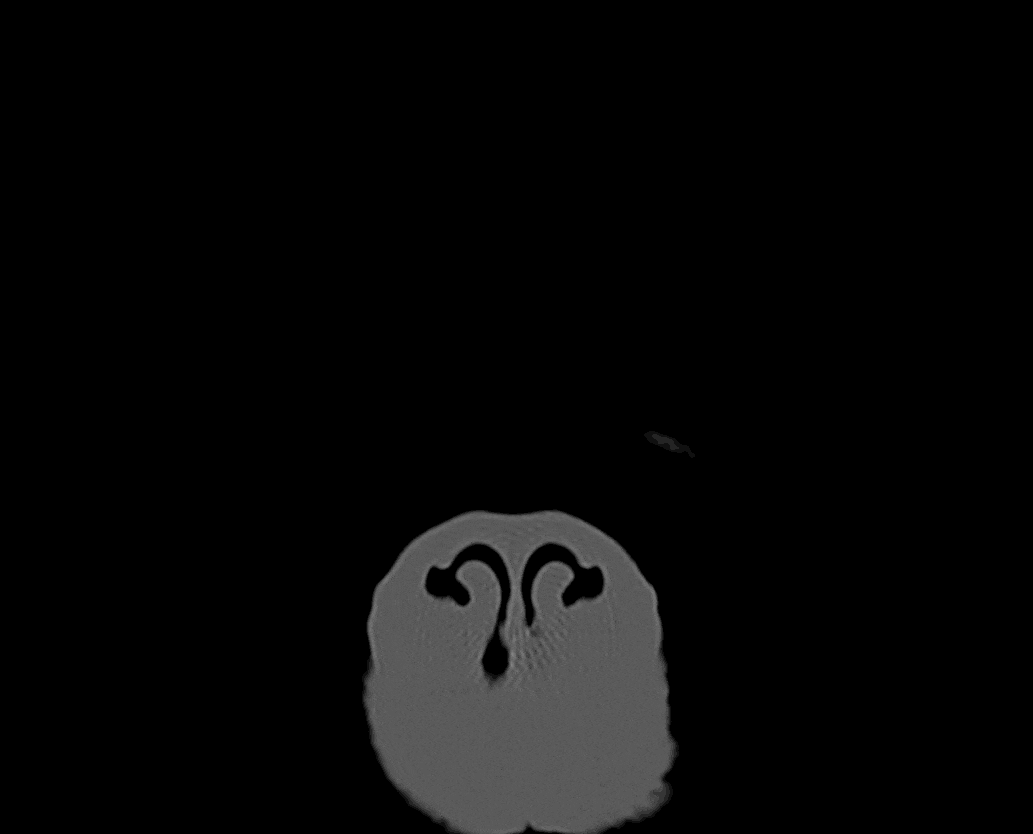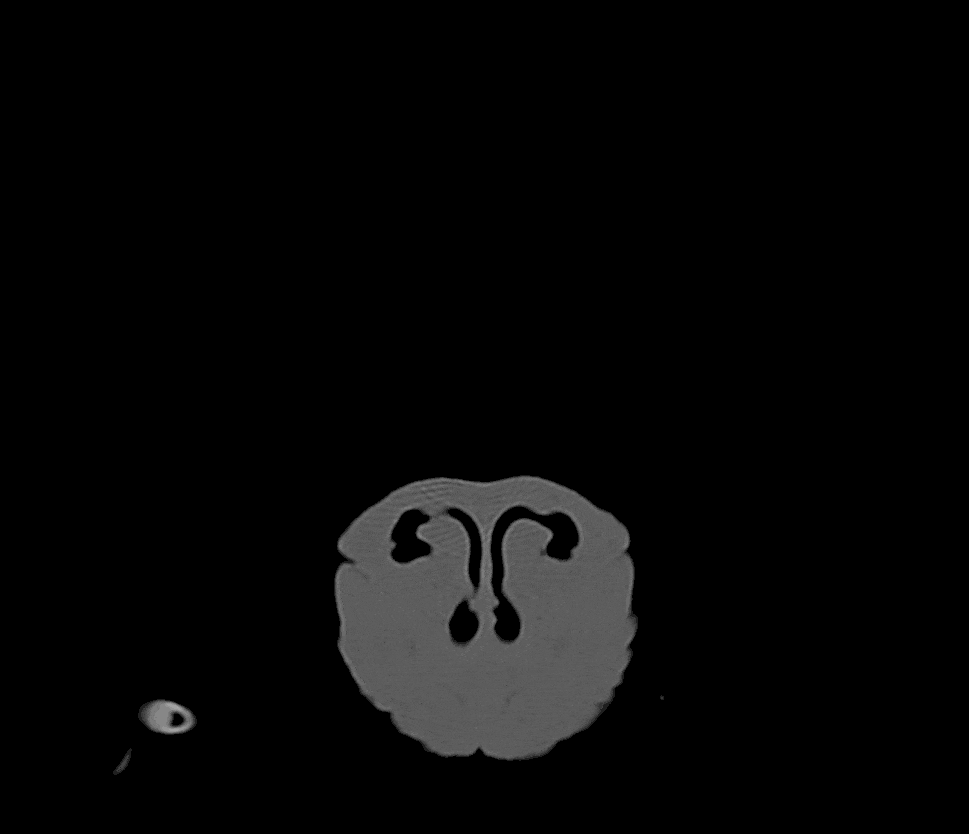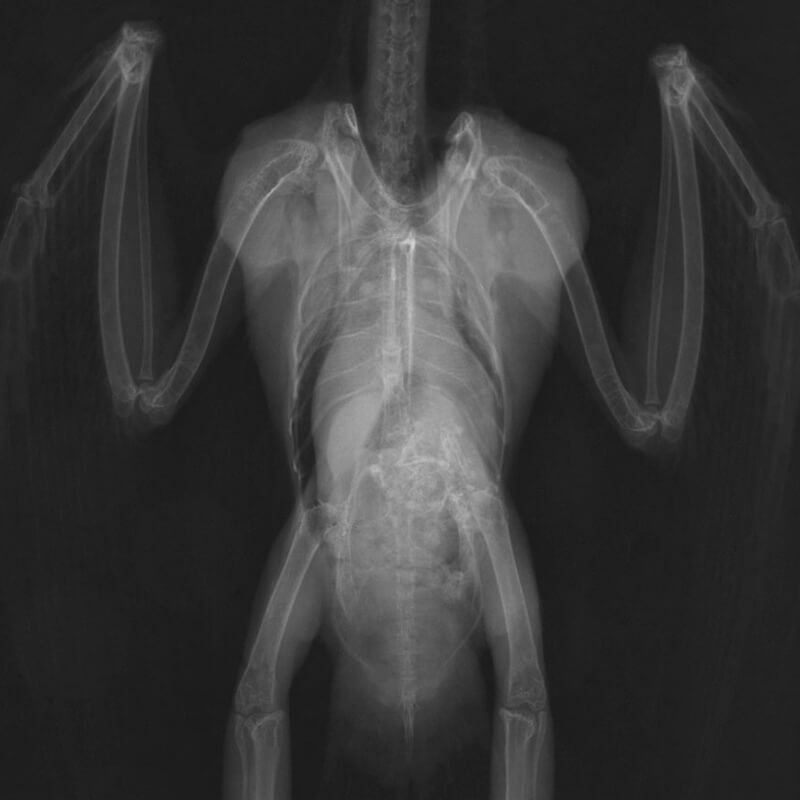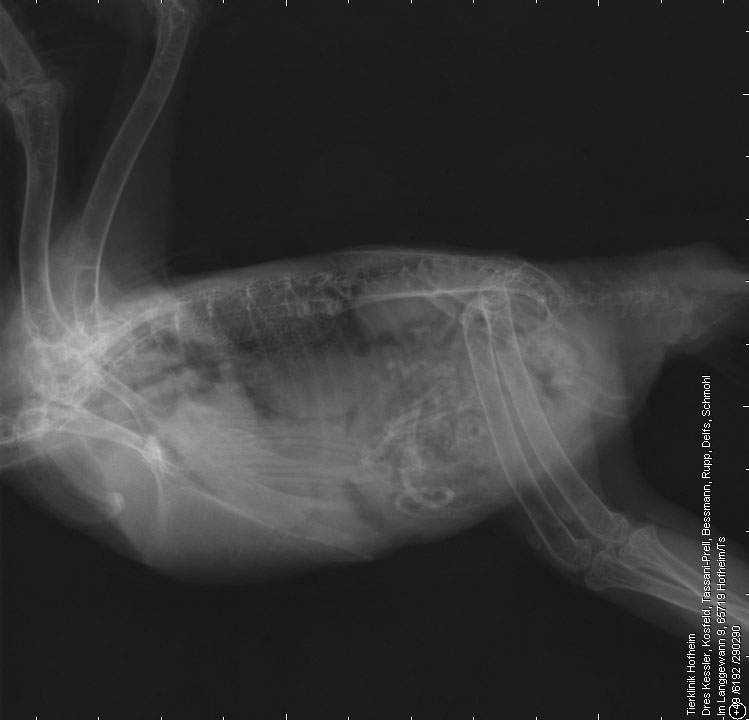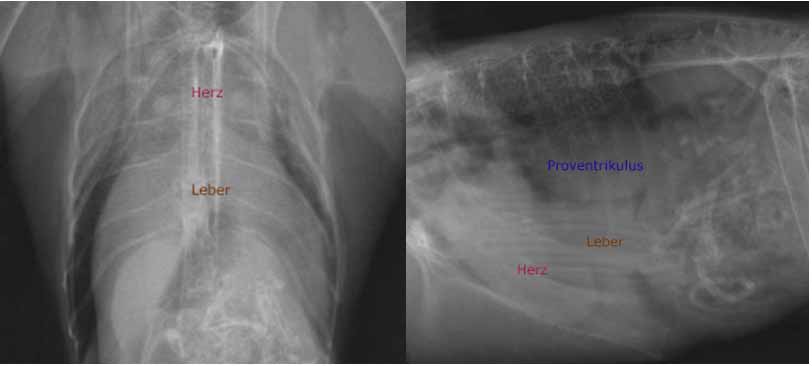Labrador Retriever Bella, 9 years
Post-contrast sequence
Pre-contrast sequence
With kind permission Dr. G. Viefhues, Small Animal Clinic Ahlen
Diagnosis
Description
The atlanto-occipital and atlanto-axial junctions are surrounded by a cavitating, space occupying lesion which is hypoattenuating to the surrounding soft tissue. The density of the individual cavities is 11-13 HU (density of the neighboring muscles is approx. 80 HU). Another space occupying lesion is located ventral to the M. longus capitis and appears separate from the other masses. It is approx. 3.8cm long, 2.5cm high, 4.1cm wide and results in severe displacement of the pharyngeal roof so that the caudal nasopharynx is completely obliterated. The occipital and temporal bones as well as the atlas (C1) and cranial aspect of the axis (C2) including the dens show a large number of well circumscribed, lytic defects. The space occupying lesion extends into the right caudal cranial fossa which leads to mild displacement and compression of the cerebellar vermis. Brain stem and spinal cord at C1 and C2 are also compressed; mostly from ventral and the sides. Severe, heterogenous and foamy contrast enhancement of the compressing structures in the spinal canal is evident. The space occupying lesions do not contrast enhance.
CT diagnosis
- Soft tissue neoplasia atlanto-occipital and atlanto-axial junction with bone destruction and compression of cerebellum, pons and spinal cord
Discussion
The changes are suggestive of a myxosarcoma. Differential diagnoses include all other soft tissue tumours; however, the extreme hypodensity of all masses is highly suggestive of a myxosarcoma. The tumor is most likely arising from the atlanto-occipital and atlanto-axial joints, which are continuous which each other. The described masses are therefore most likely connected and part of one tumor mass.
Outcome
Bella was euthanized. The histopathological report confirmed the diagnosis of myxosarcoma.















